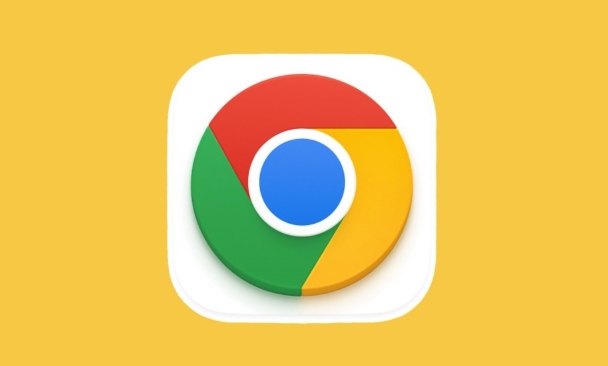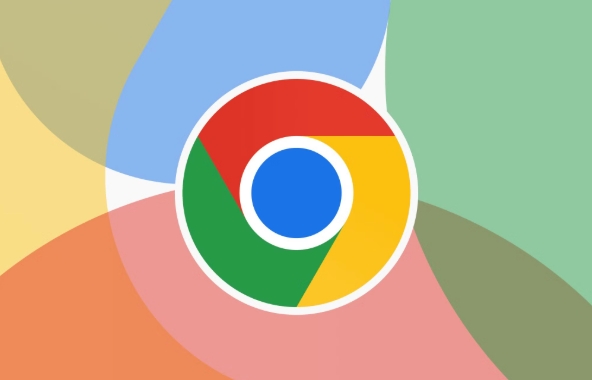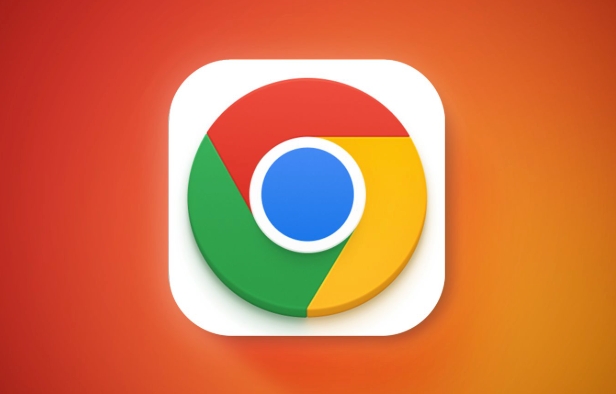Why is Google Chrome crashing when I try to print?
Aug 02, 2025 am 09:18 AMUpdate Chrome to the latest version via Help > About Google Chrome to fix bugs causing print crashes. 2. Update or reinstall printer drivers by removing and re-adding the printer in system settings to resolve compatibility issues. 3. Test printing in Incognito Mode and disable extensions one by one to identify those interfering with the print process. 4. Clear cached data or create a new Chrome profile to eliminate profile corruption as the cause. 5. Disable hardware acceleration in Chrome Settings > System and restart the browser to prevent GPU-related conflicts. 6. Attempt printing different pages or save the page as a PDF first to determine if the issue lies with specific corrupted content. 7. Temporarily disable antivirus software and add Chrome to its exclusion list if security programs are blocking printing functions. Updating Chrome and printer drivers often resolves the issue, but systematically addressing each potential cause typically restores normal printing functionality.

Google Chrome crashing when you try to print can be frustrating, especially if you're in a hurry. While there’s no single cause that fits every case, several common issues are known to trigger this problem. Here’s a breakdown of the most likely reasons and what you can do about them.

1. Outdated Chrome Version
An outdated browser can have bugs that interfere with printing, especially with newer printer drivers or operating system updates.
What to do:

- Open Chrome and click the three-dot menu in the top-right corner.
- Go to Help > About Google Chrome.
- Chrome will automatically check for updates and install them if available.
- Restart Chrome after the update.
Keeping your browser up to date often resolves printing crashes because Google regularly patches known bugs.
2. Corrupted Printer Drivers or Settings
Chrome relies on your system’s printing subsystem. If the printer driver is outdated, corrupted, or incompatible, Chrome may crash when it tries to communicate with it.

What to do:
- Update your printer driver:
- On Windows: Go to Settings > Devices > Printers & scanners, remove your printer, then re-add it to trigger a fresh driver install.
- On macOS: Go to System Settings > Printers & Scanners, remove the printer, then click the " " to re-add it.
- Try using a different printer (if available) to see if the crash still happens. If not, the issue is likely with the original printer’s driver.
3. Conflicting Chrome Extensions
Some extensions, especially those that interact with PDFs or page content (like ad blockers or PDF tools), can interfere with the print process.
What to do:
- Open Chrome in Incognito Mode (Ctrl Shift N), which disables most extensions.
- Try printing in Incognito. If it works, an extension is likely the culprit.
- Go to chrome://extensions, and disable extensions one by one to identify the problematic one.
4. Corrupted Chrome Profile or Cache
Your user profile or cached data in Chrome might be corrupted, causing crashes during resource-intensive tasks like printing.
What to do:
- Clear browsing data:
- Go to Settings > Privacy and security > Clear browsing data.
- Choose "All time" and check "Cached images and files".
- Try creating a new Chrome user profile:
- Click your profile icon in the top-right > Add.
- Switch to the new profile and test printing.
5. Hardware Acceleration Issues
Chrome uses your computer’s GPU to speed up rendering, but this can sometimes conflict with printing functions.
What to do:
- Disable hardware acceleration:
- Go to Settings > System.
- Turn off "Use hardware acceleration when available".
- Restart Chrome and try printing again.
If printing works, you can leave it off or try re-enabling it later after updates.
6. Problem with Specific Web Page or PDF
Sometimes, the crash isn’t Chrome’s fault — it’s caused by a poorly coded webpage or a corrupted PDF.
What to do:
- Try printing a different page (e.g., google.com).
- If only one page crashes, the issue is likely content-related.
- Save the page as a PDF first (Print > Save as PDF), then open and print that file.
7. Antivirus or Security Software Interference
Some security software blocks Chrome from accessing printing functions, especially if they involve PDF generation.
What to do:
- Temporarily disable your antivirus/firewall (just long enough to test).
- If printing works, check your antivirus settings for browser or print blocking features.
- Add Chrome to the antivirus’s exclusion list if needed.
In many cases, simply updating Chrome and your printer driver solves the issue. If not, try printing in Incognito mode or disabling hardware acceleration — those two steps fix the majority of crashes.
Basically, it’s usually not Chrome itself, but something in the chain between Chrome, your OS, and your printer. Tackle it step by step, and you’ll likely get it working again.
The above is the detailed content of Why is Google Chrome crashing when I try to print?. For more information, please follow other related articles on the PHP Chinese website!

Hot AI Tools

Undress AI Tool
Undress images for free

Undresser.AI Undress
AI-powered app for creating realistic nude photos

AI Clothes Remover
Online AI tool for removing clothes from photos.

Clothoff.io
AI clothes remover

Video Face Swap
Swap faces in any video effortlessly with our completely free AI face swap tool!

Hot Article

Hot Tools

Notepad++7.3.1
Easy-to-use and free code editor

SublimeText3 Chinese version
Chinese version, very easy to use

Zend Studio 13.0.1
Powerful PHP integrated development environment

Dreamweaver CS6
Visual web development tools

SublimeText3 Mac version
God-level code editing software (SublimeText3)

Hot Topics
 How to stop Chrome from updating in the background on Mac
Jul 21, 2025 am 12:41 AM
How to stop Chrome from updating in the background on Mac
Jul 21, 2025 am 12:41 AM
To prevent Chrome from automatically updating on Mac, it can be done by disabling update services, modifying permissions, and restricting network access. 1. Use terminal commands to disable the GoogleSoftwareUpdate daemon to prevent background updates; 2. Modify update directory permissions to prevent Chrome from starting the update process by itself; 3. Restrict Chrome's outbound network connection through system firewall or third-party tools to further eliminate update requests. Using these methods in combination can effectively prevent Chrome from being automatically updated.
 How to stop Chrome from automatically opening PDF files
Jul 21, 2025 am 12:09 AM
How to stop Chrome from automatically opening PDF files
Jul 21, 2025 am 12:09 AM
To let Chrome download directly instead of opening it when clicking on the PDF link, 1. Enter chrome://settings/content/pdfDocuments to check "DownloadPDFfilesinsteadofautomatically opening theminChrome"; 2. Check whether there are plug-ins such as Lightpdf or Smallpdf interfering behavior, you can try to disable the test; 3. You can use the developer tools to copy the link and paste the new tag to trigger the download. The above methods can be selected according to the situation.
 Microsoft Edge keeps closing unexpectedly
Jul 21, 2025 am 12:38 AM
Microsoft Edge keeps closing unexpectedly
Jul 21, 2025 am 12:38 AM
1. To turn off abnormal problems, you can first disable the extension to troubleshoot conflicts; 2. Clear cache and browse data to resolve file corruption issues; 3. Update Edge and system to fix potential bugs; 4. Reset or fix browser settings to restore the default state. Microsoft Edge unexpected shutdown is often caused by extension conflicts, cache corruption, software bugs or setting exceptions. Trying to disable extensions, clear data, update programs and reset settings can usually be solved, and pay attention to the resource usage of network environment and background process.
 How to fix screen tearing when scrolling in Chrome
Jul 25, 2025 am 12:55 AM
How to fix screen tearing when scrolling in Chrome
Jul 25, 2025 am 12:55 AM
The screen tear occurs when the Chrome browser scrolls, which is usually caused by the out-of-synchronization of rendering and refresh. The solutions are as follows: 1. Ensure that hardware acceleration is enabled, you can manually check the settings and restart the browser; 2. Forcefully enable Compositor and related options to optimize rendering; 3. Check the display refresh rate, use single-screen testing, and enable VSync or adaptive synchronization technology on supported devices; 4. Update the graphics card driver or replace the display interface such as using the DP interface. It is recommended to start the troubleshooting with simple steps and gradually adjust to find the best configuration.
 How to fix Chrome profile sync getting stuck in setup
Jul 25, 2025 am 01:10 AM
How to fix Chrome profile sync getting stuck in setup
Jul 25, 2025 am 01:10 AM
The problem of Chrome sync stuck can be solved through the following steps: 1. Check the network connection and Google account status to ensure normal access; 2. Log out and log in to the Chrome account again; 3. Clear the synchronized data and restart the browser; 4. Reset Chrome settings; 5. Try the traceless mode or new user profile. Sequentially checking can effectively restore the synchronization function.
 Chrome keeps opening new tabs by itself
Jul 22, 2025 am 12:22 AM
Chrome keeps opening new tabs by itself
Jul 22, 2025 am 12:22 AM
The problem of Chrome automatically popping up new tabs is usually caused by malicious extensions, advertising scripts, or browser hijacking. The solutions are as follows: 1. Check and uninstall suspicious extensions, especially ad-class plug-ins; 2. Clear browser caches and cookies to eliminate data corruption; 3. Check whether the homepage and default search engine settings have been tampered with and manually corrected; 4. Use antivirus software such as WindowsDefender or Malwarebytes to scan and clear potential malware; 5. Finally, try resetting Chrome settings to restore the default configuration. Troubleshooting in this order can effectively solve most abnormal labeling problems.
 How to fix Chrome opening new windows instead of tabs
Jul 26, 2025 am 01:29 AM
How to fix Chrome opening new windows instead of tabs
Jul 26, 2025 am 01:29 AM
1. Check whether the shortcut attribute has additional parameters and delete it; 2. Clear cache and switch startup settings, or create new user information; 3. Extend the impact and disable the problem plug-in through traceless mode. Chrome pops up new windows instead of tabs usually due to exceptions in shortcut parameters, cache configuration conflicts, or third-party extension interference. Check and adjust the corresponding settings in turn to resolve.
 How to fix Chrome when it's not printing correctly
Jul 26, 2025 am 02:46 AM
How to fix Chrome when it's not printing correctly
Jul 26, 2025 am 02:46 AM
Chrome printing exceptions can be solved in the following ways: 1. Check the printer selection, paper size, orientation, zooming and background graphics settings in the print preview; 2. Try stealth mode to eliminate extended interference and clear cache; 3. Update or reinstall the printer driver, replace the general driver or use the "Print as PDF" method; 4. Finally, you can reset the Chrome settings to restore the default. Most problems can be solved through the first few steps. If they still fail, you can export PDF to print.






